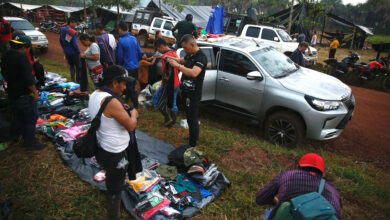Ukrainian village scarred by trauma of Russian invasion

By Luis Angel Reglero
Mala Rohan, Ukraine, May 24 (EFE).- Kot Vasyl and his wife Evdokia point to the holes on their refrigerator from bullets that pierced the window of their modest home in Mala Rohan, a village in northeast Ukraine that has been liberated from Russian occupation, although explosions can still be heard in the distance.
The elderly couple were among the few people who chose to stay behind in their hometown near the northeastern city of Kharkiv when Russia invaded their country three months ago.
For the 83-year-old husband, Evdokia is his “heroine” because she decided not to abandon their home during the month that their villages was occupied by Russian forces.
Kot Vasyl tells Efe he has seen some of the residents who were evacuated returning after the Ukrainian troops “cleared” the area of “enemies” a few days ago.
The Russians looted many houses, including the married couple’s, according to Kot Vasyl.
Polina, one of their neighbors, says that she turned the electricity and gas back on a few days ago.
The 59-year-old stayed with her mother in a shelter in her house, which escaped any major damage as the Russians were unable to force their way in.
Polina remembers how the attacks on Mala Rohan began on February 24, as soon as the Russians launched their invasion.
Two days later, residents saw a column of Russian tanks rolling down the village’s streets. The battle had begun with the Ukrainian defending troops, who managed to take Mala Rohan back on March 26, she says.
Many Russians took off their military uniforms and started dressing as civilians when they were outmatched in the area, where many people speak Russian, Polina adds.
Andriy Poslovich, a 16-year-old mechanic student, is looking for something salvageable from destroyed Russian tanks and military vehicles, and the remains of a downed helicopter in the middle of an alfalfa field.
Some 3,000 people lived in this rural area before the war, he says, but only about 300 remained when the war began.
In the distance, people line up to receive food. “It’s humanitarian aid,” he says.
Nearby, Vitaly Vitalijovych is leading a team of 10 workers who are trying to repair a power station that was partially destroyed in the fighting.
They have been working nonstop for four days and they still have a few more plants to fix to restore electricity to several towns in this rural area.EFE
lar/smq/ks





